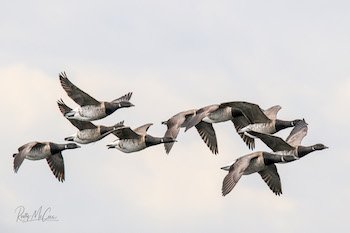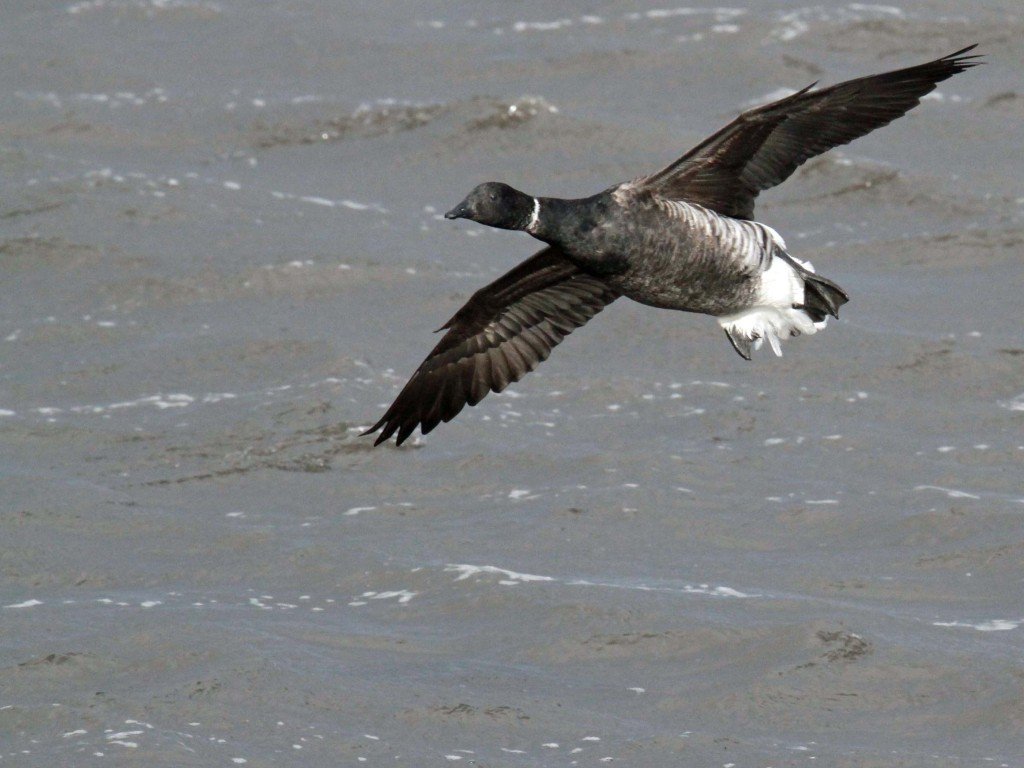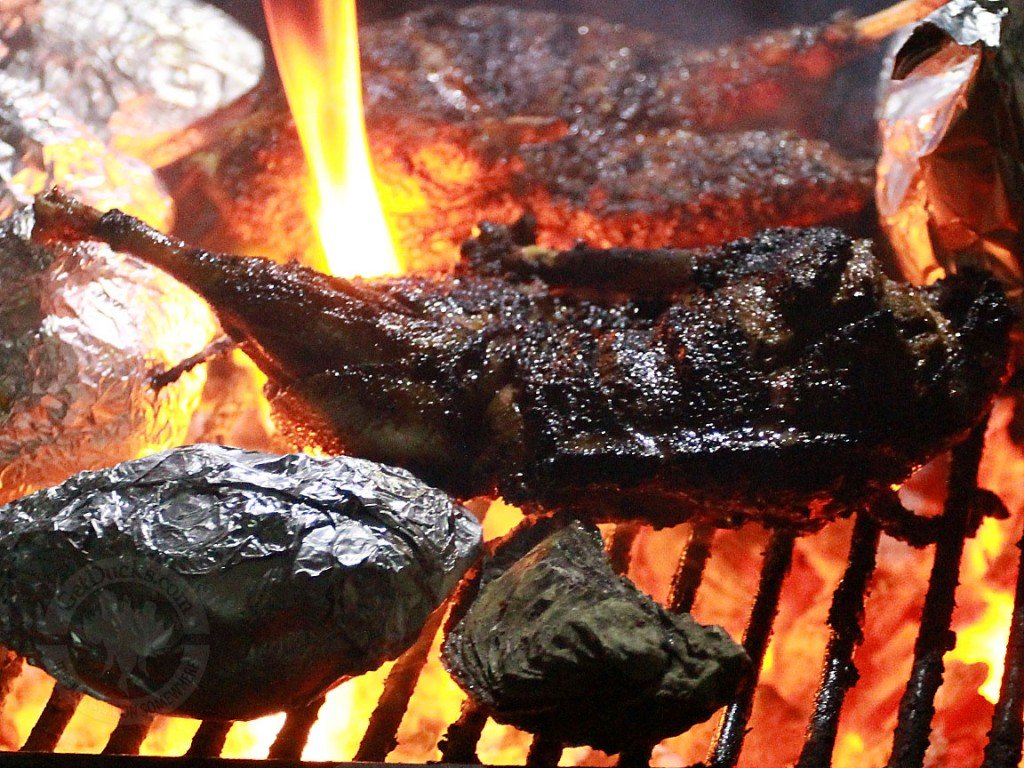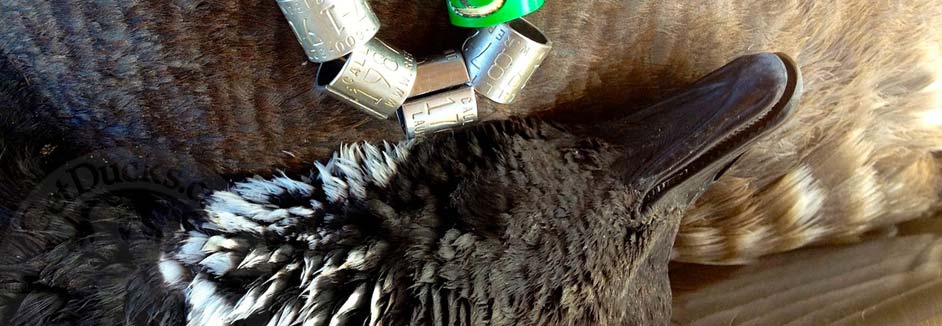Brant Goose

The Brant Goose (Branta bernicula) is a small, dark high-Arctic goose that primarily uses estuarine habitats. It has one of the shortest necks of all geese and is characterized as being “compact.” Brant have short, blunt, black bills on small black heads. Their black plumage extends down to the neck and to the breast with irregularly shaped white patches on upper neck sides forming a “white necklace” slightly under the head that is variably among North American brant subspecies. Mantle, back, rump, scapulars, and upperwing coverts a dark gray-umber brown. Flight feathers black. Uppertail coverts and ventral areas white. Belly and flanks variable depending on which North American subspecies. The tar-bellied Black Brant (B. b. nigricans), or Pacific Brant, subspecies is the darker of the two subspecies, the other is known as the Atlantic Brant (B. b. hrota). A third world sub-species (B. b. bernicla) exists in Europe. Brants have a long-reaching, hoarse calls sounding like raunk raunk which is made either in flight or at rest. They are high susceptible to decoys and calling.

Breeding brant populations are widespread and found in Greenland, Northwest Territories, Nunavut, and northwest Alaska. This elegant species has a very limited range and shares wintering grounds with Emperor Geese on the Aleutian Islands. As with many goose species, the Brant Goose is known to be monogamous and is believed that the males will follow their mates to their natal grounds. This is the only time of year where this species is aggressive and territorial. All other times of year, they are somewhat curious but skittish around humans if they get too close. Wintering grounds are found on the inner Aleutian Islands, down the west coast of California and down into Mexico, and the Atlantic Coast from Rhode Island down to North Carolina.
Brant geese diet year-round is predominately vegetation. Favored plants of this species include pondweed, mosses, eelgrass, algae, and saltmarsh cordgrass. Eelgrass is favored. Declines in eelgrass due to urbanization, sedimentation and disease, especially on the Atlantic cost, brant have adapted increasingly to foraging on urbanized and agricultural grasses. Many believe that this dietary change has negatively affected brant’s palatability as tablefare.
Brant sound like chain-smoking sandhill cranes, described by son, Forrest while hunkered in a New Jersey salt hayed blind, listening to distant brant flocks in the ocean breeze. We hoped the receding tide would initiate their trading over the silhouettes jutting from the fresh mudflat. It did. They usually move on falling tides to feed on freshly exposed feed or grit, drink fresh water or loaf. All have soot black necks and heads, pearl necklace-like markings that seem better defined on black brant. They make their living in association with saltwater. Their stubby bills put to good use nipping eelgrass, their favored food.

An estimated 10% native eelgrass beds remain along the Atlantic Flyway, lost to urbanization-related activities. They’ve adapted by feeding on sea lettuce, little league field sod. Many say it’s affected their palatability. Eelgrass has declined in the Pacific Flyway, too, but the black brant I’ve eaten, especially from Izembek Lagoon (purportedly the largest eelgrass bed on earth), are among the world’s most delicious waterfowl. The flavor is in the fat. Their migration seems to be withering on the west coast. Milder winters? Their preference for eel grass? Don’t know. But we don’t witness the massive flocks along Sea of Cortez seen 4-5 years ago.
Brant are not particularly hard to hunt. It’s all about being in the right place (where they want to be) at the right time (when the tide starts to fall). Calling and flagging helps pull those undulating flocks nearer, where they’ll coil like a long snake into decoys. Have seen contest lists name “brant” without differentiating between the two. Contrasts between Pacific and Atlantic experiences, between New Jersey and Sea of Cortez for example, draw me like a moth to flame. Like brant to decoys.
Where Can You Hunt Brant?



















